How To Finish Off Your Pond – 7 Answers
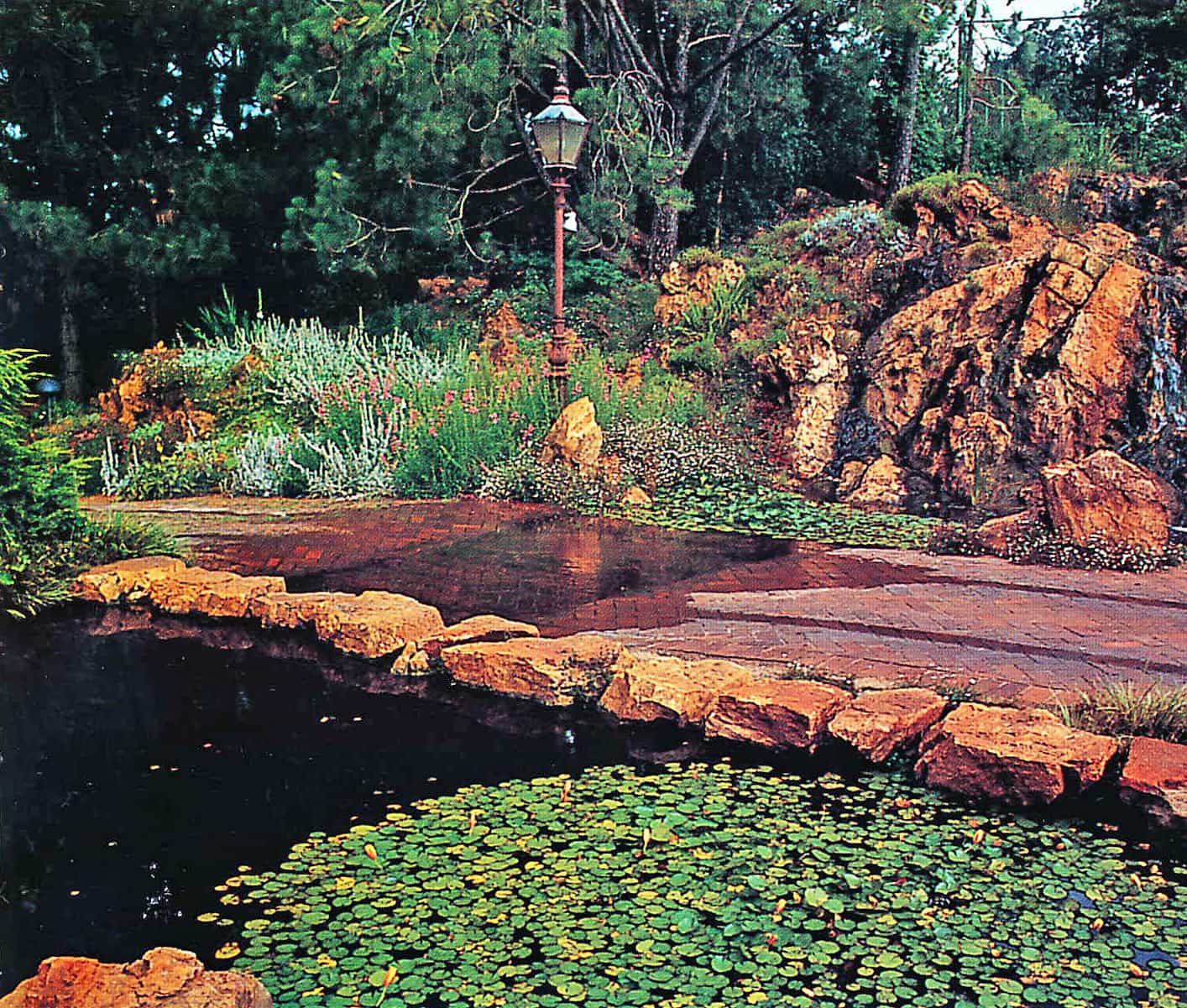
To Finish off Your Water Feature or Pond Is Important
Drainage
Wherever there is water, drainage is an inevitable factor. In most instances, solutions to any potential problems can be easily found.
Unfortunately, a disadvantage of a water garden established where water occurs naturally is that you are likely to have muddy, boggy areas around the pond, at least when it is rainy. In fact, if any pool overflows during wet weather, this will inevitably result in mud and slush.
A solid edging and adjacent paving will minimize potential problems. The surface should slope away from the pond very slightly, to allow for water run-off. Where an adjacent patio abuts the house, the paving must always slope away from the building. The finished surface should be at least 150 mm (6 in) below the damp-proof course (DPC) of the house, or below the internal floor level.
If grass is grown right up to the water, you may be faced with erosion of the bank. While this is not a problem with bentonite or clay ponds, which seal themselves, mud will slide into a rigid shell and flexible liners may start to collapse.
One solution is to establish a bog garden around the perimeter of the pond, but access to the water will be limited. Alternatively, you can dig a trench around the water’s edge and fill it with stones or gravel to create a French drain and conceal it with plants.
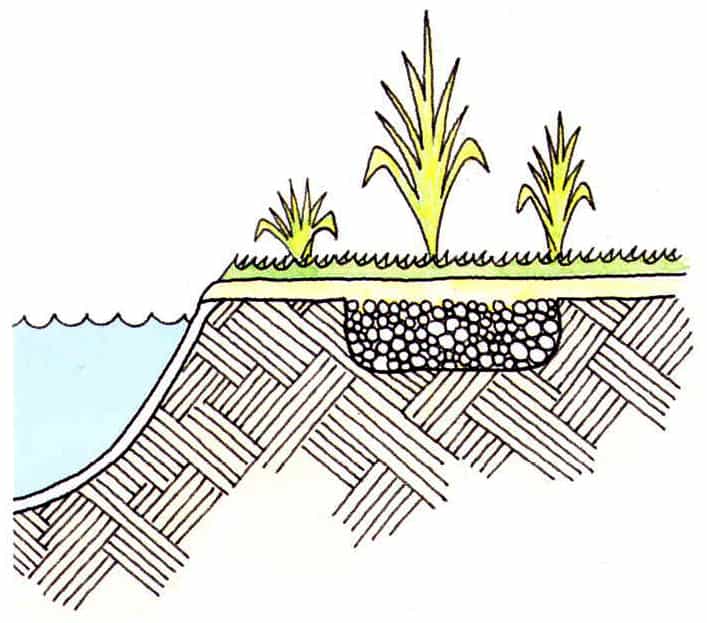
Drainage holes are seldom included in ponds nowadays; and they should, in any case, be avoided. Even though a plughole can be well sealed with silicone, this will always be a particularly weak point which could result in leakages. Besides, unless the draining water is led right away from the pond by underground pipework, the water will inevitably erode beneath the structure and probably cause it to collapse.
Another problem is excess water which overflows in rainy weather. In severe instances, the sides and banks of a pond tend to erode and fish may be swept out of the pond.
In high rainfall areas, it is sometimes advisable to install an overflow system of some sort to cope with all the excess water. The simplest is to finish off with a pipe or channel which leads to a gully, French drain, or even a bog garden.
A severe drop in the water level is also damaging. Not only can it affect fish and plants, but if you have used a polyethylene liner, prolonged exposure to sunlight will cause rapid deterioration. If bentonite was used, the exposed surface may crack unless the water level is raised.
If the level drops, either top-up the pond with a hose-pipe, or install an automatic top-up system to maintain a constant water level. The most common method is to use a ball float valve similar to those found in toilet cisterns. Set to the correct level, it automatically allows water fed through a pipe from the mains to fill up the pond. You may want to hide the ball float itself under a wooden platform or beneath a fake GRC or fiberglass rock. Alternatively, the ball float valve can be set in a small reservoir tank next to the pool, and perhaps camouflaged with a paving slab (see illustration below). This operates rather like the cistern itself, feeding the water to the pond through a connecting pipe.
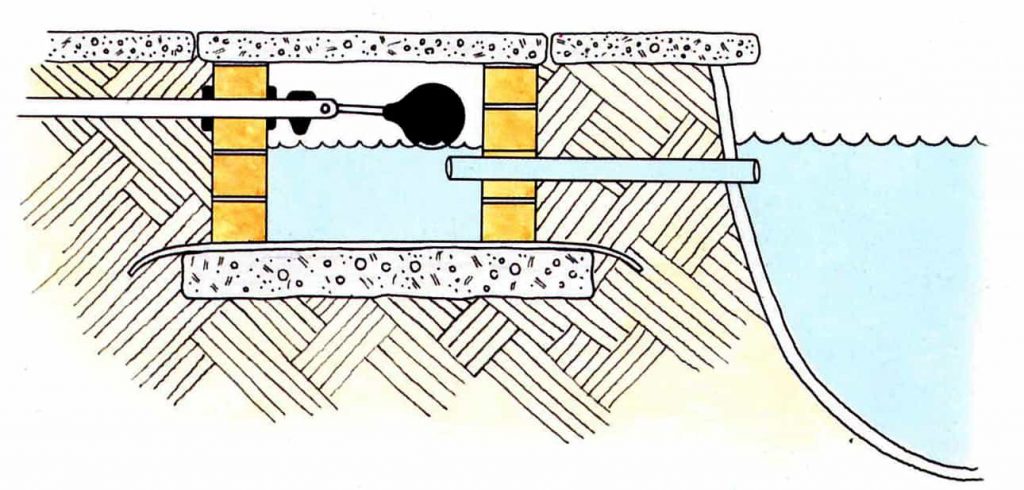
There are sometimes restrictions regarding the connection of pools to the mains water supply, so check with your local authority first.
Here are a few auto pond top-up kits to choose from:
Pumps and filters to finish off
Water and electricity do not mix, and new installations as well as modifications to existing wiring, should be overseen by an electrician. lt is just as important to check the official regulations which are applicable to electricity in the gardens in your area. In some countries only low-voltage supplies may be used near water and a transformer may be required.
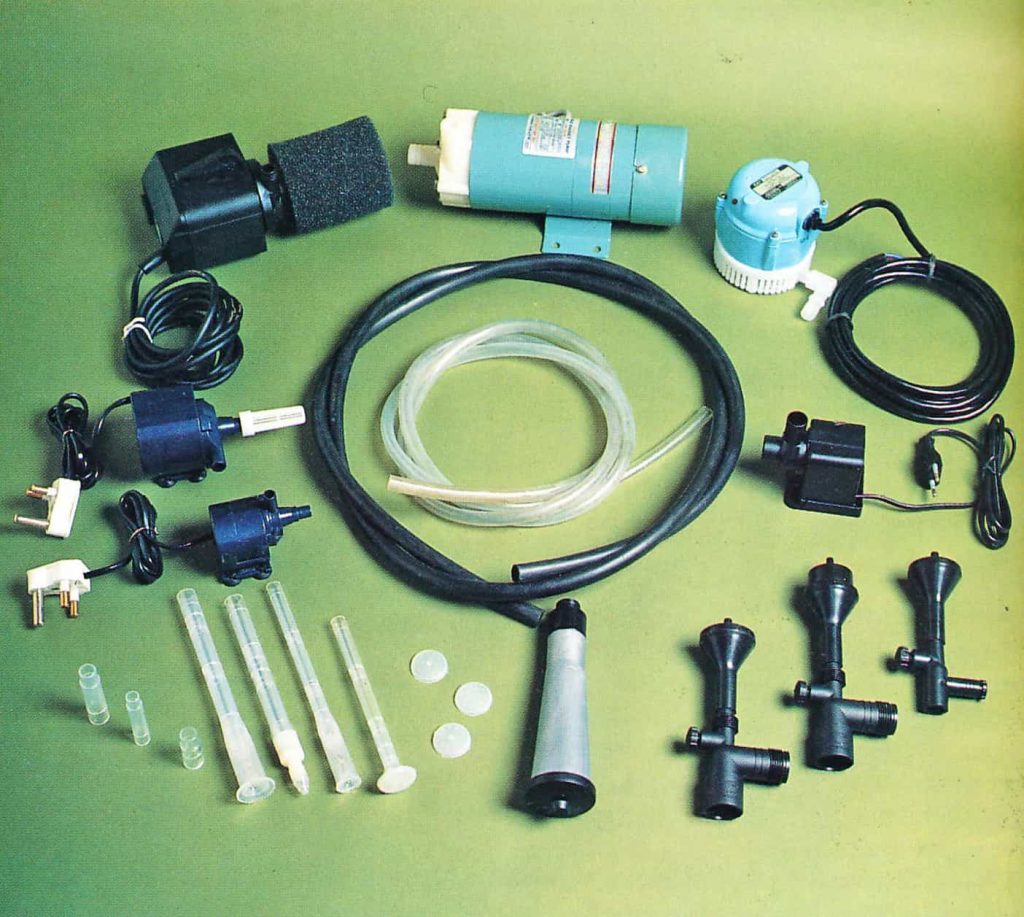
Where the pump is connected to a household electrical circuit, you will usually be protected by an existing circuit breaker (or trip switch). However, it may be necessary to install one of these units on a separate circuit to detect deviations or leakage in outdoor current.
Many of the electrical appliances and fittings available for use in and around water features can be safely and effortlessly installed without taking extra precautions or seeking professional assistance. Electric cables are easily protected in conduiting (or armored cable), which can then be buried in the ground. Specially designed weatherproof boxes will enable you to plug in submersible pumps outdoors and to operate fountains and waterfalls at the touch of a switch.
NB. If you are not sure of your own capabilities, consult a qualified electrician.
Pumps are essential for the re-circulation of water, so if you decide to install a fountain, waterfall or cascade, this will be an important piece of equipment.
There are two main types of pump – submerged or housed on the surface. Your choice will depend largely on the volume of water involved. While a small pump will be adequate for most fountains, you will obviously require a more powerful unit for a large water feature incorporating waterfalls and flowing streams.
These are the Top Rated and most popular submersible pumps:
If you want an above ground pump then look at these 4 star and up pumps:
The pump output (described in liters or gallons per hour) will be specified on the packaging, and the dealer will usually be able to advise which pump is best for your particular needs. Take care not to choose one that is too powerful, as excessive turbulence churns up sand and dirt in the pond, making the water murky. When installing a fountain, it is important to ensure that you finish off with a water head that is compatible with your design – the water head being the distance between the maximum fountain height and the pond water level. The pump should be capable of spurting water to the required height.
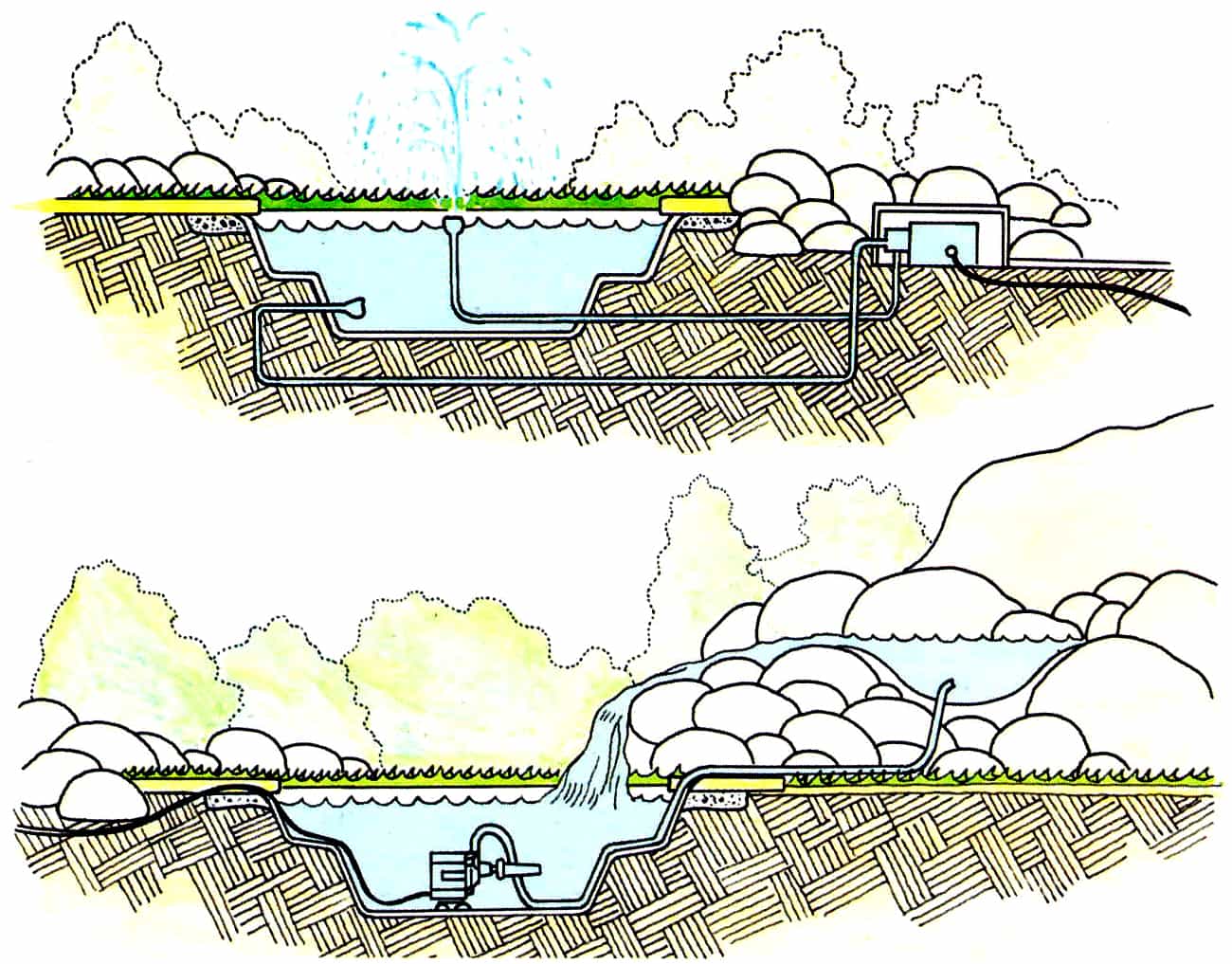
Submersible pumps are generally simple to install and operate, and an added advantage is that they do not have to be primed. Most have a strainer on the inlet to prevent fish or floating debris from being sucked into the moving parts.
Fountain jets are often fitted directly to submersible pumps and some are sold with interchangeable jet fittings. Quality is varied, but the more expensive ones generally have an adjustable flow.
Here is a versatile submersible and above ground pond pump for a medium sized pond that is worth having a look at:
If you need something a little smaller this one has a good set of reviews:
A submersible pump can be used to operate a fountain in a large pond, but do consider accessibility. If the strainer requires cleaning, you should not have to wade into the water. Instead, be sure to site the pump near the edge of the pond, on a ledge or loose-laid bricks, and run a pipe to the jet in the center.
These units are completely sealed and attached to a cable which can be plugged into an appropriate waterproof box. This box is, in turn, connected to the internal electrical system. Conduits and cables can even be run from the pump directly into the house and plugged into an internal wall socket. In very cold climates, where freezing temperatures are experienced, the pump should be removed from the water in winter.
Surface pumps, including those used for swimming pools, are expensive and sometimes noisy, but they are usually the only option for larger water features.
The siting of these pumps is important; they should be located near the pond, preferably just below the level of the water and housed off the ground in a waterproof box. Alternatively, you could cover the unit with a fake, hollow rock to finish off the look.
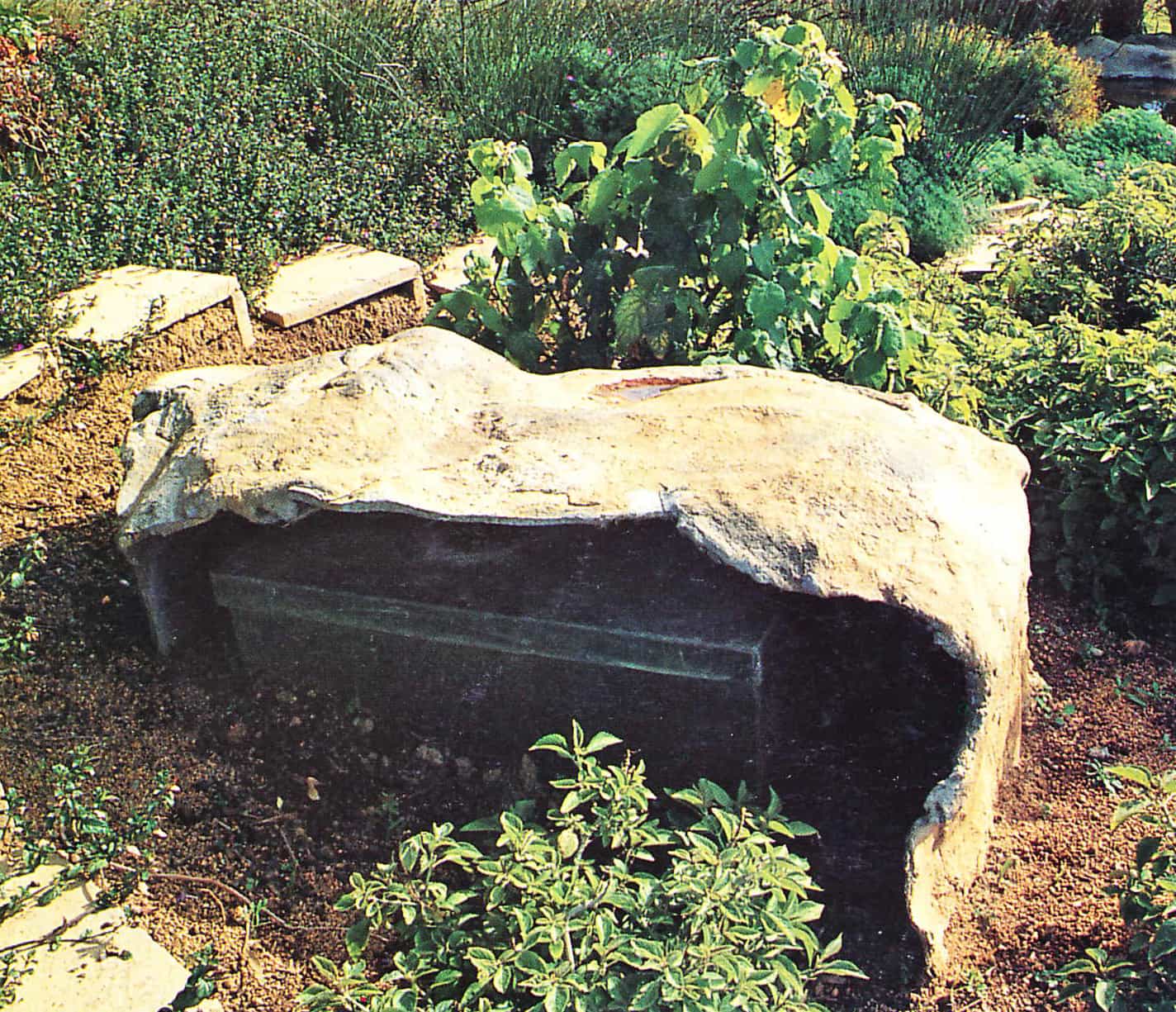
Some surface pumps have to be primed manually, but self-priming models are available. If a pump will not prime, or if it loses its prime while running, check whether there are any leaks in the pipes leading to the pump, whether the impeller is broken or the pump seal is faulty. The pump operates by drawing water from the pond through a strainer and suction pipe – these could be blocked or the water level in the pond may have dropped.
A certain amount of plumbing is inevitable with any pump and it is important to use non-toxic fittings. Plastic is usually the safest option.
Here is a question often asked and below a pretty good answer:
Question:
I’m confused. it’s listed as a 3100gph but on the website it says maximum flow rate of 1100gph. which is it?
Answer:
Hi Steve, the gph of any pump depends on the head pressure working against it. The Cyclone PAL3100 pumps 3100 gph at zero head. It pumps 2,251 gph at 5′ of head, 1390 at 10′ of head and 479 gph at 15′ of head (according to the manufacturers literature). Head is roughly calculated by adding three things together, 1′ of head for every foot of height from the surface of the pond to the highest point that the water will be pumped (if you could measure it straight up), another 1′ of head for every 10′ of tubing length, and another 1′ for every sharp turn or obstacle like a UV unit or a 90 degree elbow). Sincerely, Nate at Practical Garden Ponds 484 356 5351 P.S. The reason there is sometimes conflicting information on Amazon is because multiple vendors share the same description and most of us don’t have access to changing the information. By Practical Garden Ponds
Filters, like pumps, may be housed outside the pond or submerged in the water. Generally though, the external type is preferred as these are more reliable and much easier to keep clean.
Just as swimming pool filters are used with a pump, so too are pond filters. A major difference though, is that swimming pool filters rely on chemicals for effective sterilization of the water, thus making it safe for human use. A pond filter is used to keep the water clear and to rid it of harmful waste materials including dead plant matter, fish excreta and uneaten fish food. A relatively simple mechanical filter will sieve out dirt, waste and algae and it can be run sporadically as needed. A biological filter allows natural organisms to flourish in its confines, helping to break down decaying plant material as well as the waste excreted by fish.
These are the TOP Ranked Bio filters at the moment.
The simplest biological filter is a box (sometimes made of fiberglass – see pic below) which contains various filter media. The more advanced varieties consist of several chambers with valves, and make use of the usual filtration material.
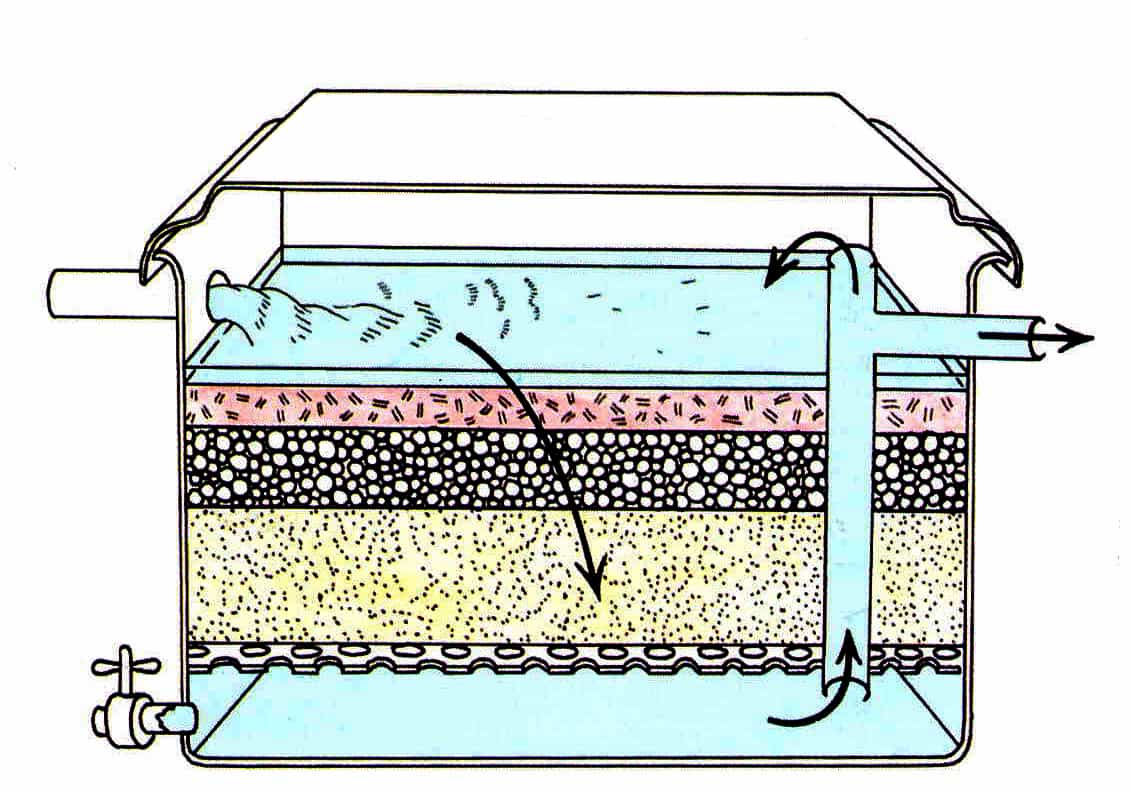
The size of the filter you will need always depends on the volume of water in your pond and the number of fish it contains. If the filter does not have the required capacity, it will not keep the water clean. When installing the filter, follow the manufacturer’s recommendations regarding the flow rate. lf it is too high or too low, the filter will not operate efficiently.
A new filter will take several weeks to mature and it is best to wait a while before introducing fish (particularly koi). Once it is running, the filter should only be disconnected when it is necessary to clean it. This type of maintenance does not take long, but should be done at regular intervals to prevent a build-up of waste. Use pond water rather than tap water which will damage the biological organisms essential to the efficient working of the filter.
Lighting
Lighting relies on electricity and is subject to the same concerns as pumps, but there is no doubt that water gardens benefit from illumination. To finish off with effective garden lighting that improves security and safety, enhancing water features after dark and improving surrounding areas.
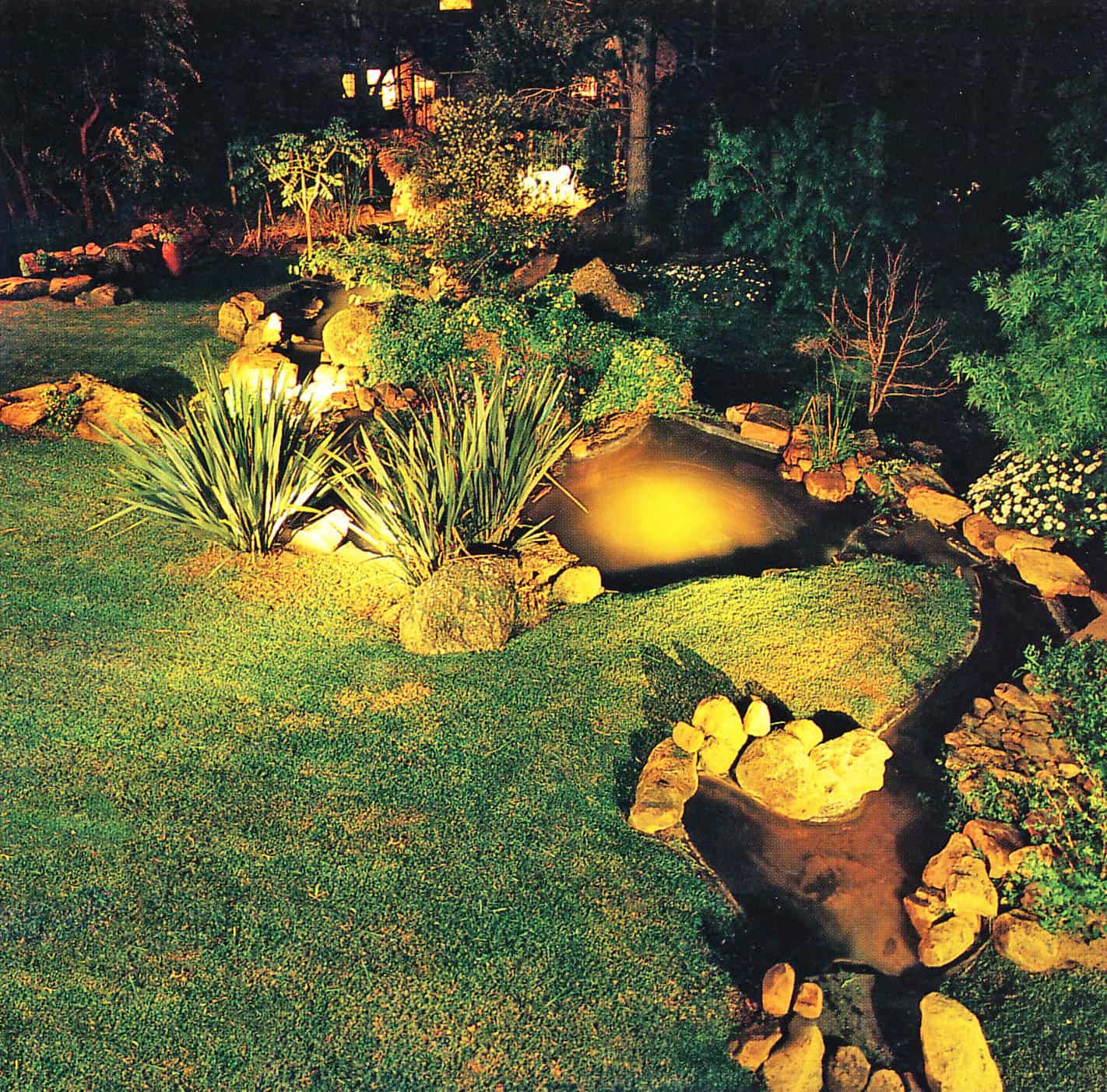
Methods of lighting various objects and areas in the garden range from direct illumination, which casts a spot or single beam, to a selection of decorative up-lighters and assorted lamps.
When deciding how to light your outdoor area, it is wise to consider function. For instance, general lighting is best reserved for patios, and floodlights for tennis courts and driveways. Paths, steps, decks, bridges and so on should be lit with safety in mind. Visitors need to see where they are walking and confusing shadows from partly-concealed decorative lighting can make these areas hazardous. It is essential that fittings are positioned in such a way to avoid light shining directly into people’s eyes.
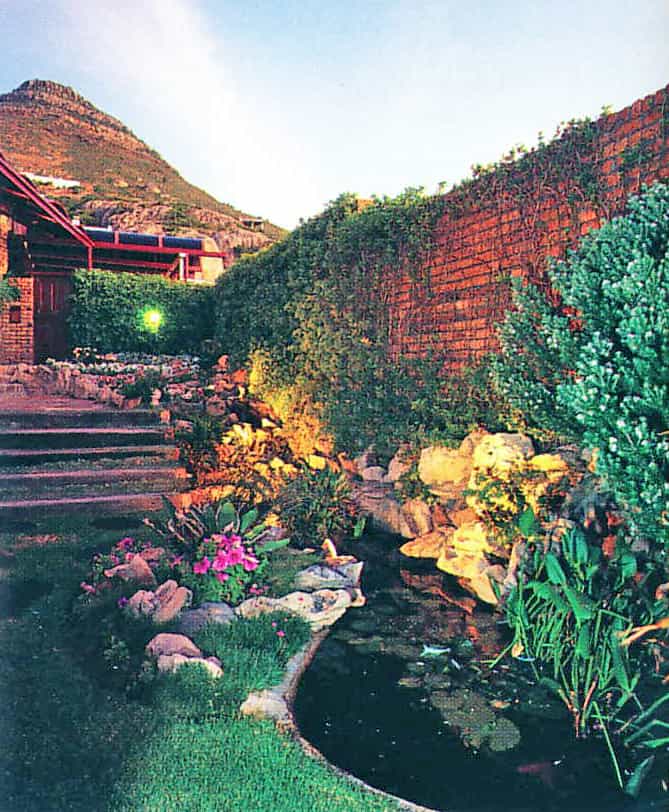
It is best to combine several types of lighting, perhaps making use of free-standing lamps for walkways, spotlights to add interest to plants, and uplighters to highlight a waterfall or cascade. Another option is to make use of underwater lighting from within the pond, for example, to emphasize a fountain. Special submersible lights are, of course, necessary for this purpose.
Fittings chosen for gardens in general, and water features in particular, must be manufactured for outdoor use. A sealed unit which can be exposed to all weather conditions is essential. While this sounds limiting, there is a wide range available, from wall-mounted carriage lamps to spots attached to stakes which may be anchored in the ground.
Whatever you choose, make sure the fitting is in keeping with the style of your garden. There is little point in achieving a beautiful effect at night, if the light looks ugly during the day. Run-of-the-mill units should be hidden beneath foliage or behind rocks.
Here is a popular selection of solar lighting:
Long-burning candles can be very effective around water features. Candles also look charming when floated on the surface of a pool.
Installation should usually be carried out by a professional, although there are DIY kits (or similar fittings) which can be easily positioned without any help at all. Most include spotlights on spikes for sticking in garden beds. Like many pumps, the whole system is plugged into a waterproof box linked to the existing electrics. Proper outdoor cable should be used. This should preferably be threaded through conduiting before being buried in the ground, Wherever two lengths of flex are joined, the connection must be protected with a waterproof coupling.
Lighting which is near or attached to the house will usually be part of the internal electrical arrangement. These lights are simpler to install than new fittings in the garden, which have to be on a separate circuit. If this is the case, an external circuit breaker may have to be installed.
Finish Off With Some Planting
Water features are part of the garden scheme as a whole. As you will already have a good idea of the effect you are aiming to achieve, this will influence your choice of plants.
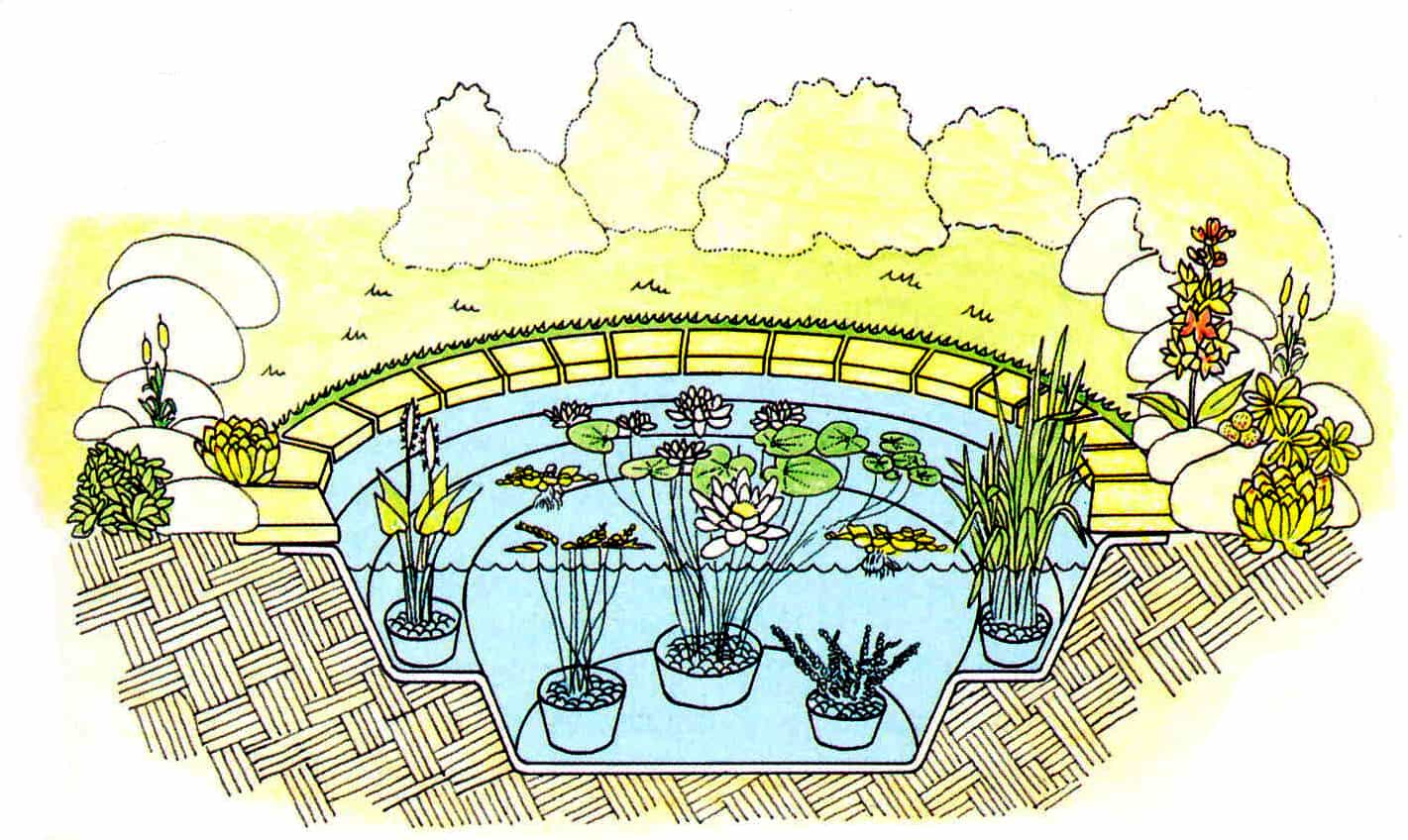
An informal pond will benefit from a combination of luxuriant planting around the edges, plant life on marginal shelves and aquatics in the pool itself . Planting around the perimeter is also a good way to camouflage any exposed concrete or liner. If yours is a formal raised pool surrounded by brick paving, you will be limited to floating and aquatic plants and possibly plants in pots.
Plants grown around the pond and in beds adjacent to it, should blend in with the surrounding garden. You are certainly not limited to bog plants or marginals, but these will often look most attractive. Some examples include the fern-like Astilbe species, marsh marigolds (Caltha species), irises and Mimulus ringens (monkey flower) as well as arum lilies (Zantedeschia spp.), which are surprisingly hardy, even if cultivated in cold climates.
Avoid shrubs and flowers that will look out of place, even if the soil allows you to plant them. Roses will look quite odd around a wildlife pond, whereas Gunnera species, ferns and various grasses will look natural. Roses may, however, be planted around a formal fountain.
Bog plants love moisture and will grow quite happily on the banks of informal ponds. Alternatively, you can establish a bog garden where they will flourish. Unlike marginals, most plants in this group should not have their roots permanently submerged in water.
Plants for your Bog Garden are essential to keep the look and health of your garden.
Various lilies, including Zantedeschia (arums), the Hosta species (plantain lilies), Hemerocallis aurantiaca (day lily) and South African Schizostylis coccinea are ideal bog plants, as are a wide range of ferns. Lobelia cardinalis, most of the Primula species and Trollius species (globe flowers) will also thrive in these conditions.
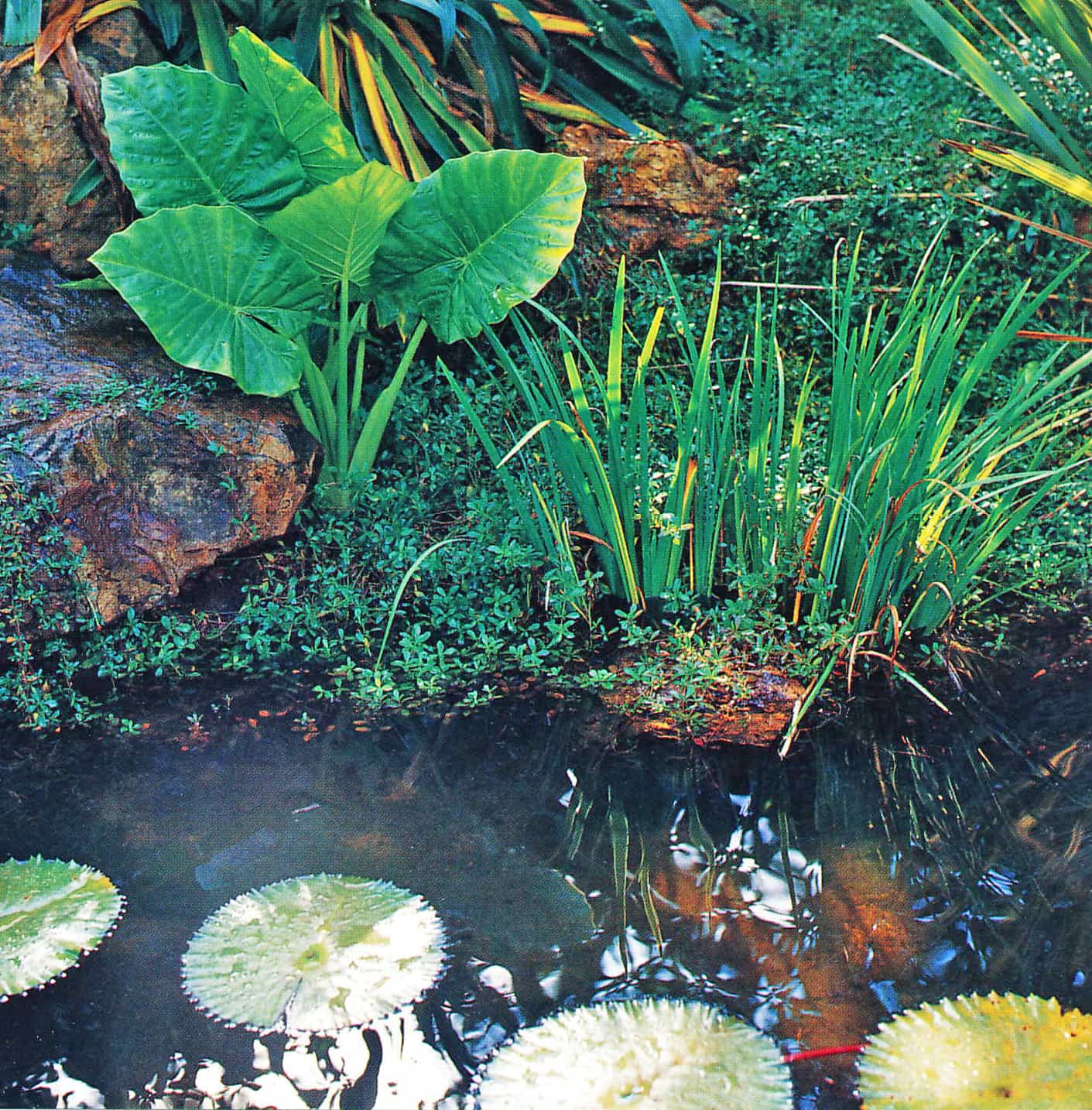
Marginal plants, as their name suggests, grow in the shallow water along the banks of ponds and pools. The construction of marginal shelves ensures their inclusion in the planting plan, although some may be grown in pots set on loose bricks or flat-topped stones. Although partly submerged, these plants do not play a role in maintaining a balance of life in the pond. Instead they are decorative, providing color and softening the water’s edge.
Planting marginals directly in the shallows of some ponds is possible, but it is more common to grow them in baskets or pots. These can be removed when it becomes necessary to divide the plant. It is best to allow one container for each plant and to group them together. Never plant different varieties in one pot.
There are many suitable marginal plants, ranging from rushes and grasses (some of which can be quite invasive), to water mint (Mentha aquatica) and various flowers. To introduce colour to a pool, certain water buttercup types like Ranunculus flammula (lesser spearwort) or R. lingua grandiflora (greater spearwort) are ideal. Pontederia cordata (pickerel weed) and other flowering aquatics like irises (available in numerous colors) will also add touches of brightness.
Oxygenators, which are submerged aquatic plants, are essential for the balance of life in any pond. They help keep the water clear and provide both food and a place for fish to spawn. Usually sold in bunches, these ‘water weeds’ are useful for getting rid of algae, as they absorb the minerals and carbon dioxide on which algae thrive. They should not be dropped into the water, but rather weighted down in soil or gravel at the base of the pond.
Oxygenators are usually available from suppliers of pond fish.
Here is a pack of 10 bunches of plant Oxygenators, they also have a smaller pack:
Floating aquatic plants are usually introduced to ponds where surface cover is required. There are not many suitable species in this category, as many are invasive. Most duckweed varieties, for instance, can multiply at an alarming rate and should be controlled. Try to find star duckweed (Lemna trisulca) as this is the least invasive specie. Water hyacinth (Eichhornia crassipes) can be a menace in warm climates, but it is popular in Britain.
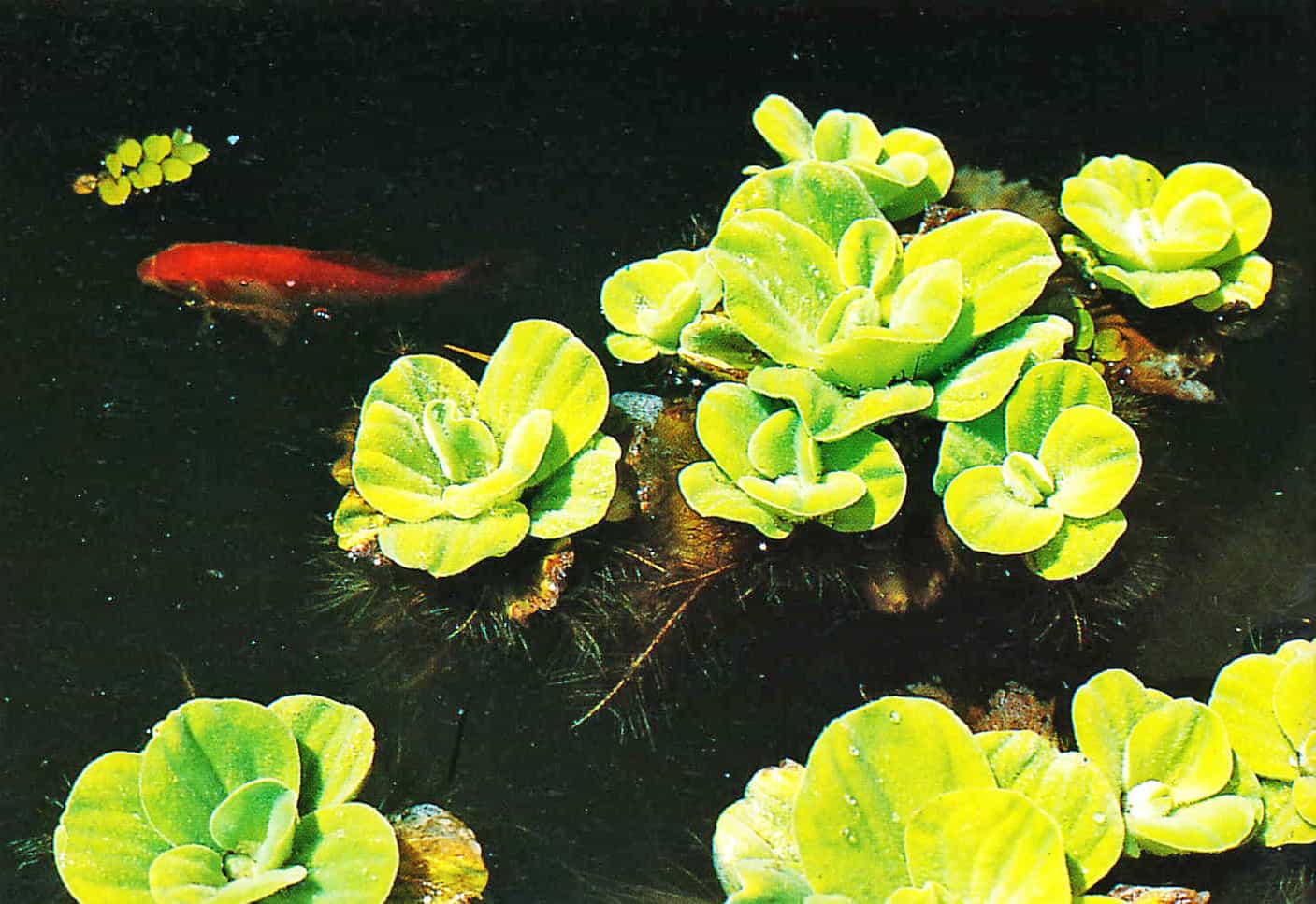
One of the most distinctive floating plants is Pistia stratiotes (water lettuce), with its rosette-like leaves and feathery roots. Although it is easily killed by frost it will survive cold weather.
Deep-water aquatics have submerged roots and stems, but their leaves and flowers float on the surface. They adequately replace water lilies in small ponds where fountains constantly disturb the water.
There is not a great variety of plants in this category, and the water hawthorn (Aponogeton distachyos) and the water fringe (Nymphoides), with its pretty yellow flowers are probably the best known. They should generally be planted to a depth of at least 300 mm (1 ft).
Water lilies are in a class of their own and they certainly take pride of place in any pool or pond. There are various types, some of which are more hardy than others. Not only are their flowers decorative, but water lilies also shade the surface of the water and help to keep it clear.
They love full sun, but will not thrive in moving water and should be grown well away from fountains or waterfalls. The recommended planting depth varies from 100 mm-1 m (4 in-3 ft) depending on the particular variety.
Keeping Fish
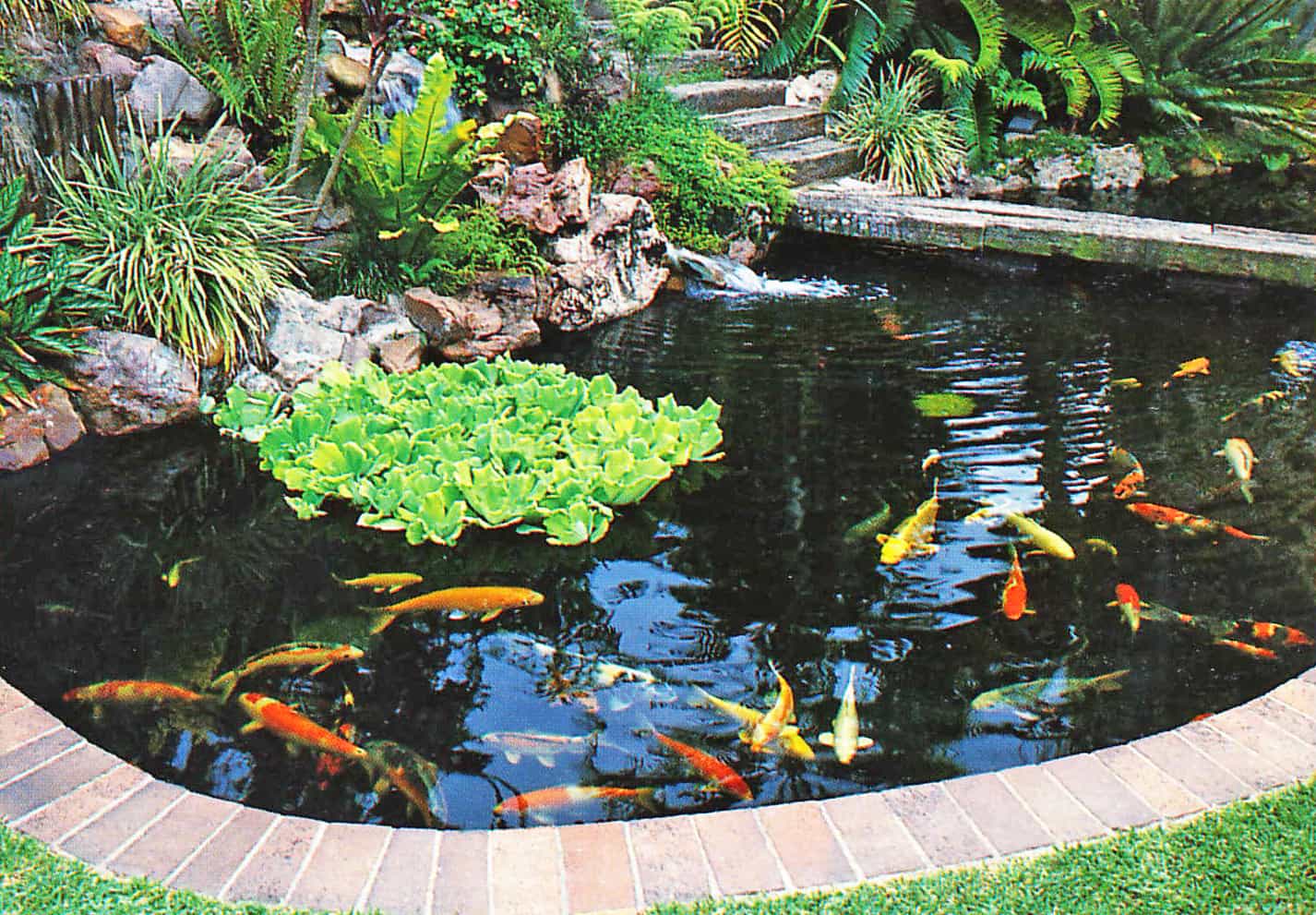
One of the primary reasons for building a pond is to keep fish They bring life to the water and add color and interest.
There are numerous fishes to choose from, ranging from the common goldfish to ornamental koi. Your choice will depend on the amount of money you wish to spend and the amount of time you have to take care of them. Goldfish and other inexpensive pond fish will generally take care of themselves, while costly koi require more attention.
Goldfish are the easiest to care for.
Bear in mind that koi, undoubtedly the most impressive of all pond fish, must be kept in aerated and filtered water. This not only enables you to see them more clearly, but it is also essential for their health.
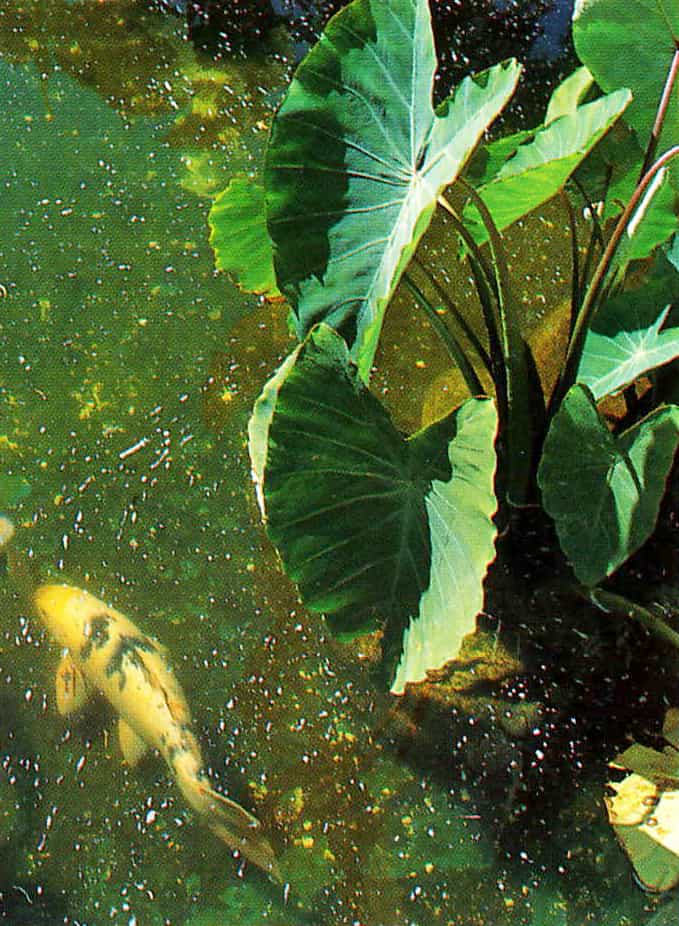
Goldfish living in an established pond will get all their food from their environment. Supplementary feeding of koi is much more important. Koi will often eat right out of your hand; but do not let this encourage you to overfeed them.
Koi are far more rewarding to keep but need more attention. Here are a few common ones to start with
Having decided what to buy, it is important not to overstock the pond. It is vital that fish have sufficient oxygen and space to grow. When in doubt, seek advice from your supplier.
When introducing the fish into the pond, float the water-filled bag in which it was bought, on the surface for about an hour to prevent a sudden temperature change. Then open the bag carefully and let the fish slip in and swim away. Empty the water into the pond.
Maintenance and repairs
Maintenance of the majority of water features is minimal. There are certain tasks, however, which will ensure their appeal all year round. For safety reasons, these chores should definitely include regular scrubbing of any accessible surfaces which might become slippery. In addition, if you have installed a filter and/or a pump, these will have to be cared for and regularly serviced. Any repairs to the shell or surround of the pool should be undertaken as soon as possible, to prevent further deterioration.
Maintenance
Upkeep of your water feature is essential, and with a regular program you will be able to avert problems and prevent a pond from becoming an unkempt quagmire or simply a breeding ground for mosquitoes.
Water In most ponds, the water simply has to be topped up from time to time as some degree of evaporation is inevitable. Do not allow the level of the water to fall more than about 50 mm (2 in) below the average, or plants, fish and plastic liners could be damaged. Bentonite ponds will tend to crack.
Decomposed water lilies and other aquatics sometimes cause an oily film to develop on the water. This can usually be removed by pulling a sheet of newspaper across the surface. If, for some reason the water becomes badly polluted, you will probably have to remove any fish and drain the pond.
Unless you filter the water in a fish-pond, dead organisms and waste products from the fish will eventually build up and become toxic. To avoid this happening, change the water partially once a year, in spring or autumn.
Green, murky water is usually caused by algae, which grows rapidly if the surface of the water is constantly exposed to sunlight. Algae will not harm the fish, but its growth should be inhibited to clear the water and ensure a good balance of life within the pond. The simplest way to do this is to shade the surface with floating plants and water lilies which have beautiful leaves or pads. If this does not work, you can introduce a chemical algicide or fit a filter. Some people advocate placing a bag of straw on the bottom of the pond; this absorbs the algae and other impurities, but it must be replaced periodically.
Here is an Algicide that is recommended for fish ponds that can be used regularly
While the degree of alkalinity or acidity (the pH) of swimming pool water should be maintained between 7.6 and 7.2, water in a fish pond may range from 8.5 to 6.5. A simple test kit may be used to measure the pH of the water from time to time. A high pH may be caused by excessive lime in the water or a build up of green algae. If it rises above 9.0, it is too alkaline. Both fish and plants will suffer unless it is rectified with suitable chemicals. Acid water with a pH below 6.0 is unusual – an adjacent peatbog or accumulated organic acids from decomposing fish waste could be the cause.
There are a number of water test kits available, here is one we found to be reliable
To empty a pond, insert a length of hose or some other flexible pipe into the water and suck on the other end to create a vacuum. The only prerequisite is that the open end of the hosepipe should be lower than the pond. If it is not, you will have to use a pump to drain it.
Plants Seldom a problem in the water garden, plants do not have to be watered, and many types thrive to such an extent, that all you have to do is thin them out from time to time and remove the sections that are no longer required.
Apart from controlling pond weeds and floaters, dead plants and fallen leaves should be removed from the pond – decaying organic matter produces gases which are toxic to fish. This can be fatal, especially in areas where ice forming over the pond surface in winter prevents the gases from escaping. If a layer of ice does form, a hole should be made so the fish are not harmed. Check it regularly to ensure it does not ice up again.
There are certain pests and diseases which affect aquatic plants, and it is best to remove the affected foliage and stalks and to hose down the remaining plants.
Slippery surfaces One of the most dangerous aspects of a pond is slippery surfaces. Moss and algae will quickly gain a foothold where constant moisture is present. Check surrounds, stepping stones, wooden steps, bridges, and so on from time to time. Scour and scrub them with clean water to make sure that they are slip-free
Repairs
Fixing minor problems may be necessary at times, lf the water level of your pond drops suddenly or you find that the edges of surrounding paving are loose and unstable, major repairs may be required. You may have to empty the shell before the necessary repairs can be undertaken.
Do not be tempted to simply top up the level of the pond daily. This results in the surrounding soil area becoming very marshy and the entire structure could be severely undermined.
Liners All liners are problematic once they have been damaged. Some rigid liners do tend to crack after a few years and you may even find it necessary to replace the entire shell. As flexible sheeting can deteriorate in the sunlight, it too will have to be replaced if this occurs.
PVC and polyethylene sheeting may be punctured by sharp objects, but you can repair both types of plastic quite successfully. Special vinyl repair kits are available. You could cut your own patch from a piece of the same type of sheeting and glue it over the hole or tear. Unfortunately, few adhesives are satisfactory, and it is best to experiment before trying to mend the sheeting. When using a repair kit, be sure to follow the manufacturer’s instructions carefully. Surprisingly, a well-known clear adhesive, patented in England & the US and manufactured for use on china, plastic and leather, works well on PVC. You do not even have to drain the pond as it sets very quickly underwater. It will also adhere to polyethylene underwater but only for a limited period. This means that you may need to replace the patch periodically.
Your pond liner can get a puncture or a tear, this can happen unintentionally but don’t stress the pond liner repair kits are easy to use to fix the problem.
Concrete Ponds that are constructed from concrete sometimes develop leaks, especially if they have not been rendered and coated with a waterproof sealant. The most common reasons for leaks are incorrect concrete mixtures made with too much (or the wrong type of) sand and the subsidence of foundations. Tiny fractures can be sealed quite efficiently with bitumen. Distinct cracks should first be chipped out and filled with mortar or a proprietary patching plaster. Do not be tempted to use an ordinary filling compound as this will be too porous.
Plaster patch kits are available to plug those nasty slow leaks.
If the crack opens up again (or if you cannot find the leak), it is best to line the pond with a flexible material or, better still, to seal it with fiberglass.
Timber If wood starts to deteriorate, replace it immediately. Not only will this avoid expensive structural repairs to your water feature at a later stage, but if the timbers split or rot, the entire structure could become dangerous.
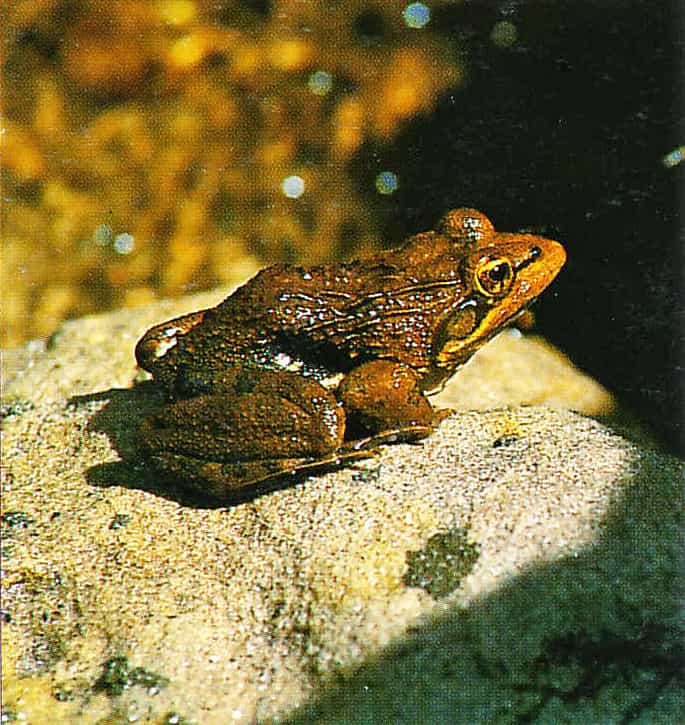







3 Comments